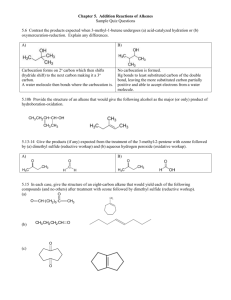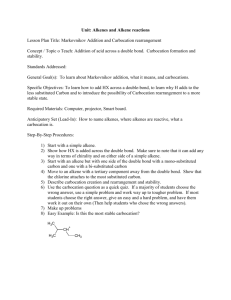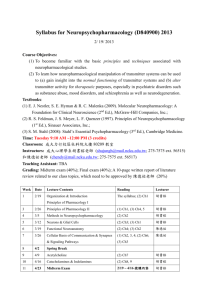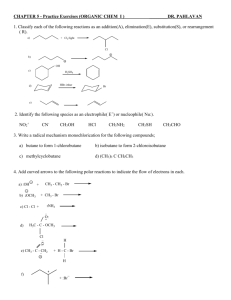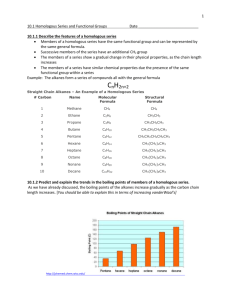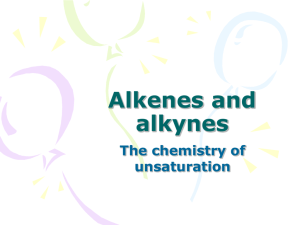2.9 hw ms - A
advertisement
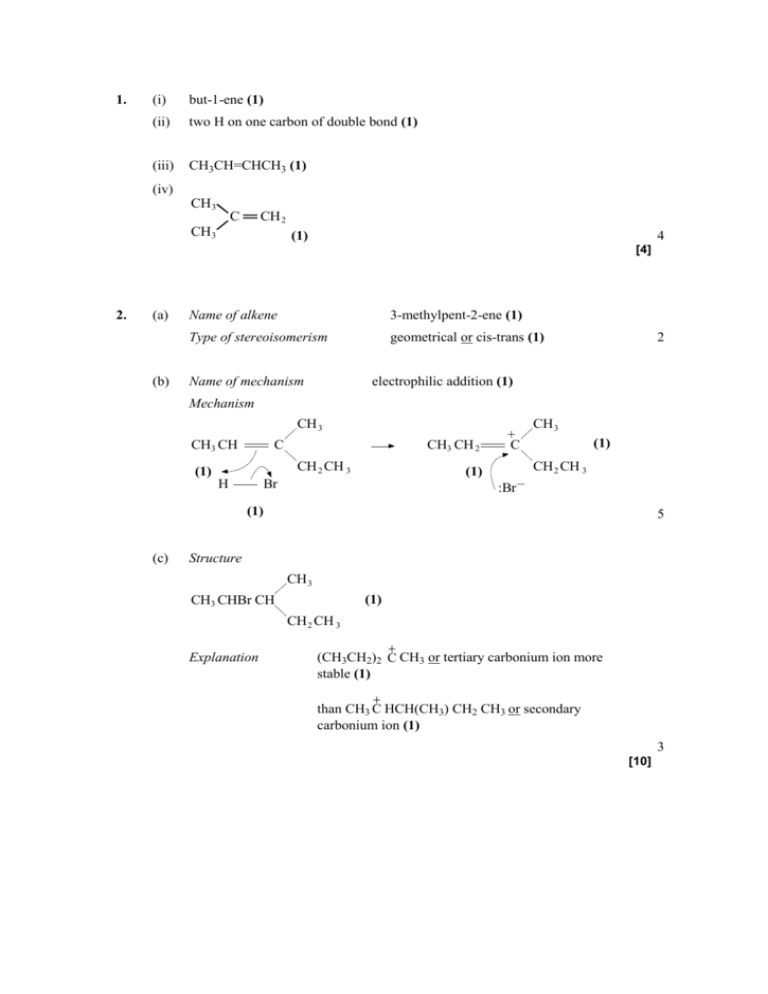
1. (i) but-1-ene (1) (ii) two H on one carbon of double bond (1) (iii) CH3CH=CHCH3 (1) (iv) CH 3 C CH 2 CH 3 (1) 4 [4] (a) (b) Name of alkene 3-methylpent-2-ene (1) Type of stereoisomerism geometrical or cis-trans (1) Name of mechanism 2 electrophilic addition (1) Mechanism CH 3 CH3 CH + 2. C CH3 CH 2 CH 2 CH 3 (1) H (1) Br CH 3 (1) C CH 2 CH 3 :Br – (1) (c) 5 Structure CH 3 (1) CH3 CHBr CH CH 2 CH 3 Explanation (CH3CH2)2 C CH3 or tertiary carbonium ion more stable (1) than CH3 C HCH(CH3) CH2 CH3 or secondary carbonium ion (1) 3 [10] 3. (i) C18H34O2 Only; C9H17O Only; (empirical formula is not consequential on molecular formula) (ii) (An unsaturated compound) contains (at least) one double bond 1 1 OR Contains C=C; (must be a positive statement) (iii) 1 M1: Bromine water OR Br2(aq) OR Bromine OR Br2; 1 (penalise “bromide water”, but mark on) Ml: decolourised or goes colourless OR from brown/red/orange/yellow to colourless; (Must be “colourless” not “clear” for M2) (chemical error if no reagent or wrong reagent, loses both marks) (credit KMnO 4 for M1, (purple) to colourless for M2 (if acidified) OR (purple) to brown/brown precipitate (if alkaline or unspecified) (No credit for hydrogen or iodine as reagents) 1 [5] 4. (a) (i) Electrophilic addition (Both words required) 1 (ii) M1 the reaction to form 1-bromopropane goes via the primary carbocation OR 1o carbocation 1 OR via CH 3 CH 2 C H 2 M2 primary carbocations are less stable than secondary carbocations. (Credit converse arguments for M1 and M2 i.e. the reaction to form 2-bromopropane goes via the secondary carbocation , M1, and secondary carbocations are more stable than primary carbocations, M2) (Accept the use of “carbonium ions” as an alternative to carbocation) 1 (b) Secondary OR 2o (i) 1 (ii) + CH 3 CH CH 2 H CH3 C HCH 3 OSO2 OH M3 structure of carbocation 4 – :OSO 2 OH M1 arrow from double bond to H of H – O bond M2 arrow from bond to oxygen atom to show H – O bond breakage M4 arrow from lone pair of electrons to carbon atom of carbocation (Penalise M1 if arrow goes to H2SO4 or to formal positive charge on H, but ignore partial charges on sulphuric acid unless wrong) (Credit M2 for H+ ion) (For M4, accept negative charge anywhere on the ion) (iii) Catalyst ONLY (Ignore homogeneous, heterogeneous) 1 [9] 5. (a) (i) the joining together of monomers / small molecules (1) to form long chains / large molecules (1) (ii) nCH2 = CH2 2 (-CH2–CH2-)n (1) allow n CH2 CH2 not n C2H4 (b) 1,2-dibromoethane (1) (c) electrophilic addition (1) H H C C H Br Br + H H 1 1 H H C C Br :Br – H H H H C C Br Br H – words or diagrams to show attack by p electrons on Br atom and either +/– on Br2 or e– shift on Br–Br (1) correct carbocation intermediate (allow triangular representation) (1) attack by Br– (onto +ve carbon) leading to correct product (1) (d) (i) C 38.71/12 = 3.23 ; H 9.68/1 = 9.68 ; 4 O 51.61/16 = 3.23 (1) ratio C:H:O = 1:3:1 /empirical formula = CH3O (1) empirical mass = 31 so molecular formula = 2 × CH3O = C2H6O2 (1) (ii) 3 reagent = NaOH / KOH (1) conditions = aqueous solution (dependent on first mark) (1) 2 (iii) CH2BrCH2Br + 2NaOH CH2(OH)CH2OH + 2NaBr product = CH2(OH)CH2OH (condone missing brackets) (1) correctly balanced (1) 2 if C2H6O2 given, allow second mark only for CH2 Br CH2 Br + 2H2O CH2(OH)CH2(OH) + 2HBr allow 2 marks if reagent in (ii) is H2O or aqueous solution [15]
